Practice Test: General Science- 1 | Science & Technology for UPSC CSE PDF Download
Ques 1.To which family does all pulses belong?
Ans: Leguminosae
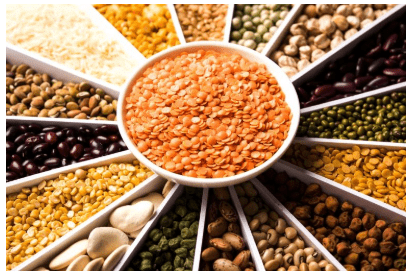
Pulses
Ques 2. Plants absorb most part of water needed by them through their ________
Ans: Root hairs
Ques 3. Which branch of science is concerned with the study of relationship of plants to their environment?
Ans: Ecology
Ques 4. Radish is a ________
Ans: Modified root
Ques 5. Plants that grow under average conditions of temperature and moisture are called ________
Ans: Mesophytes
Ques 6. The process of photosynthesis is most active in _____
Ans: Red light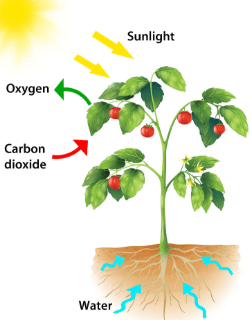
Photosynthesis
Ques 7. Artificial light can ________
Ans: Bring about photosynthesis
Ques 8. Pedology is the study of ________
Ans: Soil
Ques 9. The stem of water plants usually have ________
Ans: A well developed aeronchyma
Ques 10. Plants are killed in winter by frost because ________
Ans: Of dessication and mechanical damage to the tissues
Ques 11. Aquatic plants with floating leaves have ________
Ans: Stomata only on upper surface
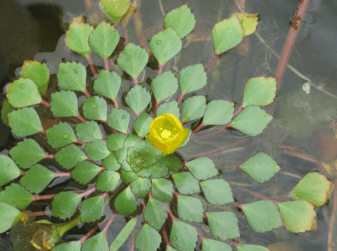
Floating leaves
Ques 12. Usually when tomatoes are plucked, they are green. They become red later because the ________
Ans: Chloroplast gets co nverted into chromoplast
Ques 13. The purpose of growing plants along river banks is to prevent ________
Ans: Siltage and floods
Ques 14. Bile secreted by the liver gets stored in the ________
Ans: Gall bladder
Ques 15. If a boy’s father has haemophilia and his mother has one gene for it, what is the chance that the boy will inherit the disease ________
Ans: 50%
Ques 16. In wrong blood transfusion RBCs at ________
Ans: Recipient agglutinase
Ques 17. ________ is not a constituent of DNA molecule?
Ans: Uracil
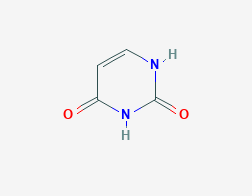
Structure of Uracil
Ques 18. When the right ventricle in the human heart contracts, the blood moves to ________
Ans: Pulmonary arteries
Ques 19. Who is regarded as the Father of Modern Biology?
Ans: Darwin
Ques 20. Which digestive enzyme is present in the saliva?
Ans: Ptyalin
Ques 21. The process by which the blood carries the absorbed food products to the tissue cells, where they are taken up, is called ________
Ans: Assimilation
Ques 22. What are Cold-Blooded animals?
Ans: Animals whose body temperature varies according to the temperature of atmosphere.
 Cold Blooded Animals
Cold Blooded Animals
Ques 23. Which is considered to be the most effective method of returning minerals to the soil?
Ans: Crop rotation
Ques 24. Most of the red, blue and purple colours of plants are due to a pigment called ________
Ans: Anthocyanin
Ques 25. Which is the principal organ of digestion and absorption of food in our body?
Ans: Small Intestine
Ques 26. Bacterial action changes dead leaves into ________
Ans: Humus
Ques 27. A fertile soil, suitable for growing common crops, is likely to have a pH value of ________
Ans: Six or seven
Ques 28. If a mouse of over eight times its normal size has been produced by introducing human growth hormone gene, the technique involved is called ________
Ans: Genetic Engineering
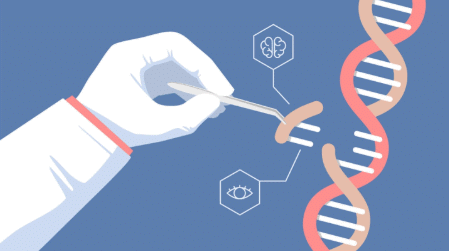 Genetic Engineering
Genetic Engineering
Ques 29. Poison glands of snakes are homologous to ________
Ans: Salivary glands of vertebrates
Ques 30. Which seed can benefit a patient of diabetes mellitus by normalising his blood sugar level?
Ans: Fenugreek.
Ques 31. Scratching eases itching because ________
Ans: It stimulates certain nerves which direct the brain to increase the production of anti-histaminic chemicals.
Ques 32. Three communicable diseases prevalent in developing countries caused by unsafe drinking water and bad sanitation are ________
Ans: Malaria, acute diarrhoea and schistosomiasis.
Ques 33. Plants hormone that induces cell division is ________
Ans: Kinin
Ques 34. Cow milk is a rich source of ________
Ans: Vitamin A.
Ques 35. The fruit formed without fertilisation is known as ______
Ans: Parthenocarpy. Parthenocarpy FruitsQues 36. The unicellular algae which is used in space programme to regulate the supply of oxygen is ________.
Parthenocarpy FruitsQues 36. The unicellular algae which is used in space programme to regulate the supply of oxygen is ________.
Ans: Chlorella
Ques 37. Heredity characters are carried to the next generation by ________ .
Ans: Chromosomes
Ques 38. When nitrogenous waste products accumulate in the blood, it is an indication that the ________ .
Ans: Kidneys are not functioning
Ques 39. The use of which devices has given the modern Biologist a better insight into the internal structure of cell ___ .
Ans: Electron microscope 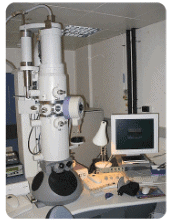 Electron microscope
Electron microscope
Ques 40. The chief value of perspiration is that it ________ .
Ans: Regulates body temperature
Ques 41. Who is regarded as the “father of genetics”?
Ans: G.J. Mendel
Ques 42. Milk in its natural form has a certain amount of sugar and that is ________ .
Ans: Lactose
Ques 43. Which is the largest part of the human brain?
Ans: Cerebrum
Ques 44. Branches of biology deals with the study of birds is ___
Ans: Ornithology
Ques 45. A person, who met with an accident, was partially paralysed and lacked a sense of feeling after treatment. Which part of the nervous system was affected by the accident?
Ans: The spinal cord seemed damaged
Ques 46. Sodium depletion occurs in excessive sweating, and cannot be corrected by drinking water alone. When uncorrected, it may lead to ________
Ans: Muscle cramps, loss of energy, fatigue and faintness
Ques 47. Excessive intake of polished rice cause deficiency of _
Ans: Vitamin B
Ques 48. In mammals the developing embryo is connected with the placenta by ________
Ans: Umbilical cord
Ques 49. In certain diseases antibiotics are administered. The object is to ________
Ans: Inhibit the growth of bacteria
Ques 50. ________ is nearly a complete food by itself.
Ans: Milk
|
93 videos|517 docs|212 tests
|
FAQs on Practice Test: General Science- 1 - Science & Technology for UPSC CSE
| 1. What is General Science? |  |
| 2. What are the important topics covered in the General Science exam? |  |
| 3. How to prepare for the General Science exam? |  |
| 4. What are the career options after clearing the General Science exam? |  |
| 5. What are the benefits of studying General Science? |  |






















